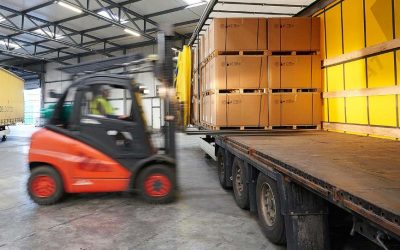With globalization forcing companies to further their expedite process and make necessary precautions to best maintain a competitive advantage and the relationships built with customers to get a response through strategies from cross docking. To define cross docking, cross docking is a model of logistics that works to optimize the supply chain by limiting the storage time as if products or goods are not stored after the unloading process but instead it is prepared and directly sent to the client. Now that we have explained cross docking, there are two different kinds of cross-docking that need to be explained. The first being, direct or pre-distributed and the second being indirect or consolidated. Direct or pre-distributed cross-docking is goods that have already been separated and now only need to be received through exit units that were originally organized through the specific delivery locations. Direct or pre-distributed cross-docking is the most common method as most products not require a lot of handling. Indirect or consolidated cross-docking is when the goods have been received and moved to a location where they are then separated and organized to be shipped to a different destination. To provide a clear understanding about the different kinds of cross-dockings it is evident to understand the process of how cross-docking works.
One: Units
Cross-docking is embedded in the process of transporting the goods of an individual supplier, then the orders are picked up based on the priority of need by each customer. Once the orders have been picked up, they are then delivered and distributed based on the corresponding routes. It is important to make sure all units have been properly picked up and distributed to the correct destinations. These are the three main states of the cross-docking process.
Two: Benefits
Using a 3PL company can provide many additional benefits when using a cross-docking method. Some of these benefits include but are not limited to, a superior efficiency and productivity in the supply chain. Lower costs for distribution as well as an easier method to handle and transport goods. This is beneficial as it is an easier method to ensure the freshness of perishables. One of the most important benefits of cross-docking is that there are minimal mistakes and limited product damage as there are less people involved in the transportation process. It also allows for faster shipments and less need for space which ultimately makes it easier to handle and relocate goods. With a constant flow of production, it is important that the necessary aspects are met that being goods are stored no more than 24 hours. The goods are then shipped to the clients immediately once the unloading process has been completed. There must be an exchange in the shipping information regarding products and statuses. Perhaps the biggest benefit of cross-docking is that it reduces both transportation and fuel costs as well as reducing the handling of products.
Three: Focus
Cross-docking focuses predominately on making the most of utilizing different business systems and technology to provide a just-in time shipping process. This also eliminates the need for numerous shipping processes because all parts of the process can be completed by the 3PL team. The consistent flow of goods during the cross-docking process is based on creating savings and expedites the transportation process at a low cost. As it is noted, the cross-docking process involves a consolidating of the units then shipping them to their desired location to move from the platforms to be received through the multiple platforms. The main explanation of understanding what cross docking is and how it works in a logistics perspective is to explain that cross docking works as a distribution system that is not responsible for storing the goods but instead works to prepare the products so they are ready to be placed on the next shipment to go to their destination. Ultimately, cross docking is a process of consolidating the goods to then have orders be broken down to go to their final destination. Cross-docking is great as it will advance the business’s cost in the future.
To sum up this explanation of what cross docking is in logistics, it grants companies the ability to relocate products at a fast and efficient speed from point A to point B while reducing the costs of both handling and storage. Cross-docking is considered a direct flow with the minimalist handling and storage time from receiving to shipping. Cross- docking is typically adopted more widely through production, distribution centers and delivery requirement.


